It’s been several years since COVID-19 struck, and many people have been longing to visit Japan, one of the most popular tourist spots in the world. Hence, much to the delight of all, Japan has finally announced its reopening on October 11, 2022! Since then, most pandemic measures have been lifted, but the immigration process still requires some paperwork to be done. Hence, let Trip.com bring you through the registration process step-by-step at Visit Japan Web and you’ll be ready for your long-awaited Japan adventure in no time!
With the launch of Visit Japan Web, there’s no need to be stuck in long immigration procedures at the airport. Instead, you’ll be able to breeze through each step with your QR codes and start your vacation in no time. Visit Japan today with Visit Japan Web!
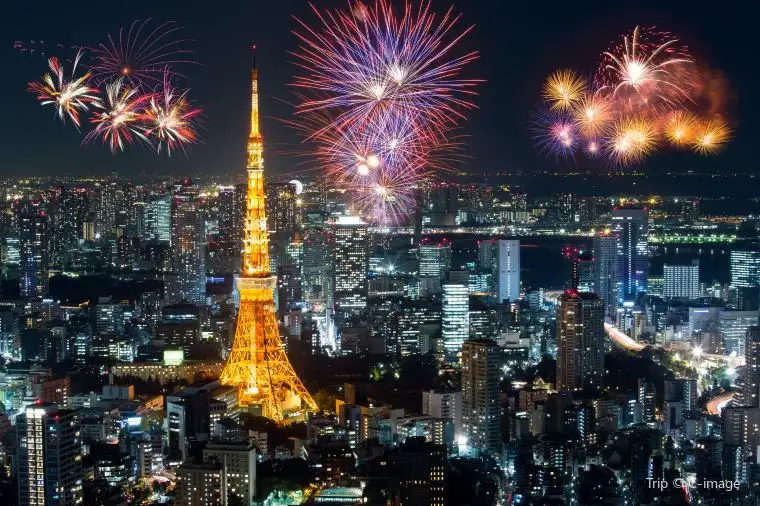
Brief Introduction about Entering Japan & Japan Travel
Over the past year, Japan has been gradually relaxing its immigration measures. This includes permitting international students to enter since March 2022, as well as granting entry to tourists if they enter as a tour group. However, on October 11, the reopening means that there is no need to register as a tour group to visit Japan nor will there be a daily limit on foreign arrivals.
What are the new measures for the reopening?
Currently, Japan recognizes all WHO EUL vaccines, and the visitors will need to receive three doses to be considered fully vaccinated. Fully vaccinated visitors will not be required to take a pre-departure test. As for unvaccinated visitors, they must take a PCR test 72 hr before their departure. On-arrival testing has also been removed except for visitors showing symptoms of COVID-19. Instead, visitors must submit their vaccination certificate (primary series and first booster dose) or negative test result certificate on Visit Japan Web, which we will elaborate on shortly.
Visitors to Japan are no longer required to have mandatory travel insurance for entry. The visa-waiver scheme has also been fully restored. In all, entry will be largely similar to pre-pandemic times, with only a few more paperwork to be done. This is where Visit Japan Web comes in.
What is Visit Japan Web?

source: https://vjw-lp.digital.go.jp/en/
Visit Japan Web is a Fast Track Registration portal for visitors to complete most of the immigration paperwork before their arrival. This registration process includes three main categories: Quarantine (Fast-Track), Immigration and Customs. The completion of each section will give you a QR code which will be scanned during your immigration process. Visitors who have completed their registration before their arrival will be given access to a special lane at the airport, allowing you to expedite your immigration process! Hence, Visit Japan Web registration is highly recommended for all eligible visitors.
What’s the difference between the MySOS app and Visit Japan Web?
MySOS is the predecessor of Visit Japan Web. Visitors who applied for Fast Track in October 2022 would have had to use MySOS. Visitors who have already submitted their application to MySOS may continue to use MySOS for entry to Japan until January 13, 2023.
As for visitors who apply for Fast Track from November 01, 2022 onwards, they will have to use Visit Japan Web. Unlike MySOS, Visit Japan Web also includes immigration and customs clearance, providing more convenience for visitors. Visitors who have registered via MySOS are welcome to re-register via Visit Japan Web if they wish to.
Please note that Visit Japan Web applications will have to be completed at least 6 hr before entry. Applications with a closer entry time to Japan will be processed first. Nonetheless, due to a high volume of applications, visitors are advised to submit their applications as soon as they can.
Comprehensive Step-by-Step Guide to Visit Japan Web Application
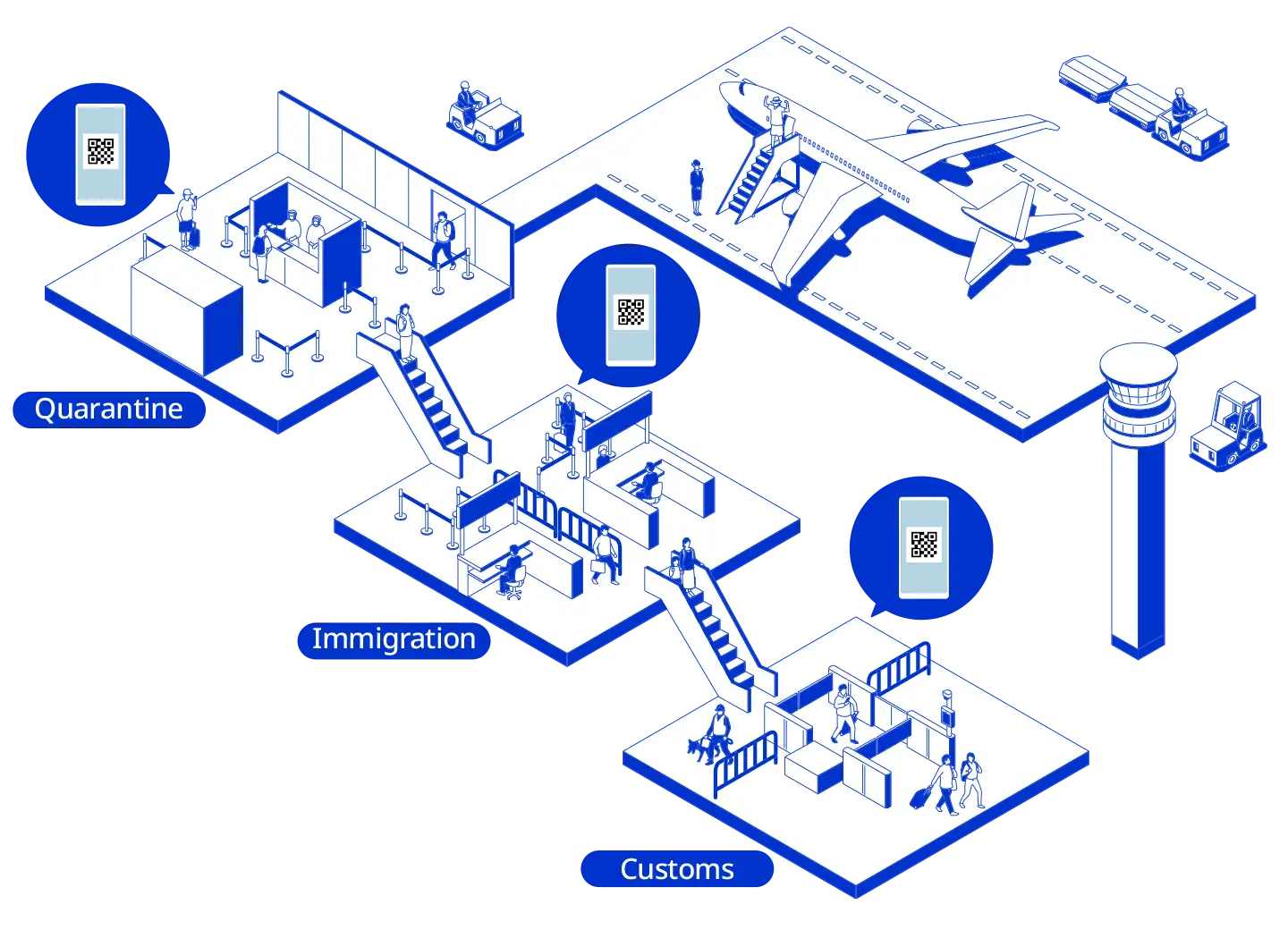
source: https://vjw-lp.digital.go.jp/en/
Now that you have a basic understanding of how Visit Japan Web works, let’s walk through the steps to register for a fast-track entry to Japan! As the process will require applicants to upload several documents (e.g., passport details and vaccination certificate), applicants are advised to register with their phone to facilitate photo taking or to upload all documents to their computer before starting the application process.
1. User Registration of Visit Japan Web
Visitors will first need to register an account with Visit Japan Web (email address and password creation). When you’ve logged into Visit Japan Web, click “Your Details” on the “Home Screen”. Then, you’ll proceed to fill in the 4 steps below
Step 1: Entry/return procedure category
Question 1: Do you have a passport issued by the Japanese government?
Question 2: Will you enter Japan with a (special) re-entry permission?
For most short-term foreign visitors on visa-free travel schemes, the answer would be no for both.
Step 2: Passport Details
The following information is required: Surname, Given Name, Date of Birth, Nationality, Gender and Passport Number.
Step 3: Intended address in Japan (optional)
Step 4: Confirm Entered Details
Applicants will be required to submit their own entry details. However, for applicants who are unable to do so themselves (e.g., infants), you may click on “Details on family members traveling with you” and add their details to your application.
2. Trip Details on Visit Japan Web
Please click on “Registering Planned Entry/Return” and click “New Registration”.
Step 1: Planned entry/return
The following information is required: Trip Name, Planned Arrival Date in Japan, Airline company name, Flight number (numbers only)
Step 2: Intended Address in Japan
If you've entered this information previously, all fields will be automatically populated.
Step 3: Select family members traveling with you
This is only applicable if you’ve entered information about family members traveling with you previously.
Step 4: Confirm entered details
3. Quarantine Procedures (Fast-Track) for Visit Japan Web
Go to “Japan Entry/Return Procedure Screen” and click “Quarantine Procedures (Fast Track)”. You will first see a red screen (not yet registered). When the application is completed, the screen will turn blue (review completed) with a QR code generated below.
Step 1: Upload your passport information page
Take a picture or upload a picture of your passport information page. Then, the tag next to “Passport” will change to “scanning”. This takes about 10 minutes, and you’ll receive an email confirmation once it’s done (please add noreply-rslt@hco.mhlw.go.jp to your safe list). The “scanning” tag will change to “Please verify”. Click on the tag to confirm your scanned details. Then, return to the previous main page and proceed to the next step.
Step 2: Questionnaire WEB
When you’ve uploaded your password, the tag for Questionnaire WEB will change from “not yet registered” to “please register”. Please tap on it. Most of the information required here would have already been automatically populated with information entered in previous steps. Please check the information and fill in any missing blanks. Please remember not to include hyphens for postal codes. If your postal code is not accepted by the system, you may leave it blank and enter the information manually. Please verify and submit your details. Then, return to the previous main page and proceed to the next step.
Step 3: Vaccination certificate
Please tap to enter and select “Will submit”. If your vaccination certificate details are in Japanese or English, tap “yes” for the first prompt. Please provide the details of your three doses and upload a copy of your vaccination certificate. Unvaccinated children below 18 years old traveling with fully vaccinated parents will be considered fully vaccinated, while unvaccinated children below 6 years old will be considered fully vaccinated regardless of their parents’ vaccination status.
Step 4: Test result certificate for test taken less than 72 hr before departure
If you’re fully vaccinated, you may skip this section. For unvaccinated travelers, please upload the information accordingly.
When you’ve completed all applicable sections, your applications will be reviewed. You will receive an email notification when your application is accepted. Then, return to the portal, and you should see a blue screen with a QR code.
4. Immigration
Please go to “Japan entry/return procedure” and scroll to “Preparation for Immigration Clearance”. Then, click on “Disembarkation Card for Foreigners”. Most of the information required here would have already been automatically populated with information entered in previous steps.
Additional information required here is your home address (country name and city name), Purpose of visit, Intended length of stay in Japan and Declaration. Click “confirm registration” to verify your details and click “Register” to submit your information. When you’ve registered, you will see “Display QR Code” appearing beneath “Disembarkation Card for Foreigners”. When you’ve arrived in Japan, please display the QR code when required during your immigration process.
5. Customs
Please go to “Japan entry/return procedure” and scroll to “Preparation for customs clearance”. Then, click on “Declaration of Personal Effects and Unaccompanied Articles”. Most of the information required here would have already been automatically populated with information entered in previous steps.
Additional information required here is Occupation, Point of Embarkation (City of Departure), Number of family members traveling with you and Declaration. Please click “Confirm entered details” to verify the information. Then, click “Register” to submit your application. When you’ve registered, you will see “Display QR Code” appearing beneath “Declaration of Personal Effects and Unaccompanied Articles”. When you’ve arrived in Japan, please display the QR code when required during your immigration process.
6. Other information about Visit Japan Web
There is one more section titled “After entering Japan (during the stay in Japan)” with 2 sub-sections: “Entered overseas travel insurance” and “Information in case of illness and injury”. It is not compulsory to fill in this information for your application.
Japan Quarantine Policy
As mentioned previously, all quarantine measures for arrivals have been lifted since October 11, 2022. However, due to the ever-changing situation of the pandemic, the Japanese government may implement quarantine measures for specific regions in the future.
Top 12 Must-Visit Places in Japan
1. Asakusa, Tokyo
The Asakusa district is one of Tokyo’s most popular districts among both locals and tourists. Here, you can find many historical sites including the famous Sensoji Temple and Asakusa Shrine. The area is also filled with many bustling streets, such as Nakamise Shopping Street and Shin-Nakamise Shopping Street. Both the temples and streets are mostly closed at night, so it’s advised to make your way there during the day! The closest airport to Tokyo is Haneda Airport, which is 25 km away from Asakusa. The distance will take 54 minutes by train.
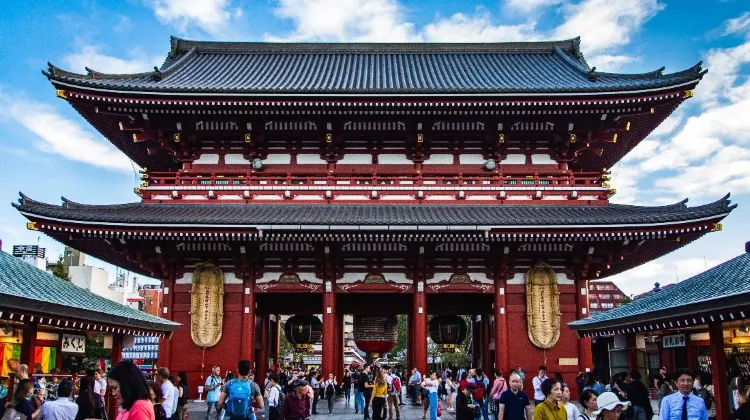
Source: Nicholas Doherty/ unsplash
The Sensoji Temple dates back to the 7th century.
2. Shinjuku, Tokyo
Shinjuku is home to Japan’s busiest train station. This crowded district is where you can find business, shopping and entertainment altogether. Visit Kabukicho to experience its popular nightlife or Shinjuku Park for some greenery in this concrete jungle! Narita Airport is the other main international airport serving Tokyo, and it is 85 km away from Shinjuku. There are express trains connecting Narita Airport to central Tokyo, and the distance can be covered in 1 hr 20 mins.
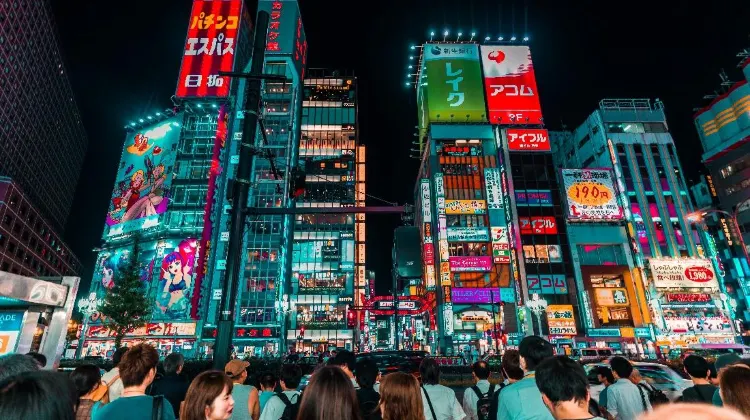
Source: Jezael Melgoza/ unsplash
Shinjuku is where business, shopping and entertainment come together.
3. Tokyo Disneyland, Tokyo
Tokyo Disneyland is situated in the Chiba Prefecture that’s part of the Greater Tokyo Area. When this magical theme park was opened in 1983, it was the first Disneyland to be built outside of the United States. When you’re there, don’t forget to visit DisneySea as well! This unique attraction can only be found in Tokyo, and you can look forward to scenic and picturesque views during your rides!

Source: Colton Jones/ unsplash
Tokyo Disneyland is the first Disneyland to be built outside of the United States
4. Osaka Castle, Osaka
The Osaka Castle dates back to the 16h century, and it is one of the most famous Japanese landmarks. The castle was commissioned by Toyotomi Hideyoshi, the great Japanese feudal lord, and it was the largest castle when it was built. The main castle building is surrounded by an impressive garden that’s one of the most popular cherry blossom viewing spots in the region. The opening hours for Osaka Castle are from 09:00 to 17:00 daily. The closest international airport to Osaka is the Kansai International Airport, which is 50 km away. The distance will take about 1 hr via train. Osaka International Airport (Itami) is another convenient choice, but this airport only serves domestic lines.
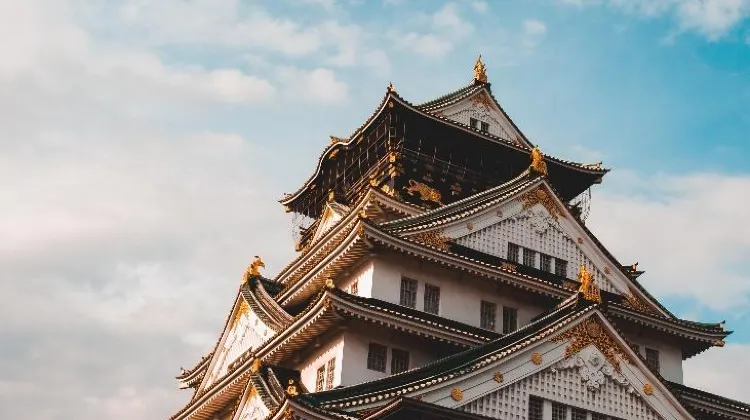
Source: Han Min T/ unsplash
Osaka Castle dates back to the 17th century, and it is one of Japan’s most famous landmarks
5. Dotonbori, Osaka
Shining neon lights, blown-up signage and a bustling crowd on both ends of the canal... it’s Dotonbori! This vibrant entertainment district in Osaka is undoubtedly a favorite among locals and tourists alike, and it’s hard not to be impressed no matter what’s your preference. Sink your teeth into delicious takoyaki or explore every inch of its massive shopping district. When you’re tired, pop into an Izakaya for some cool beer!
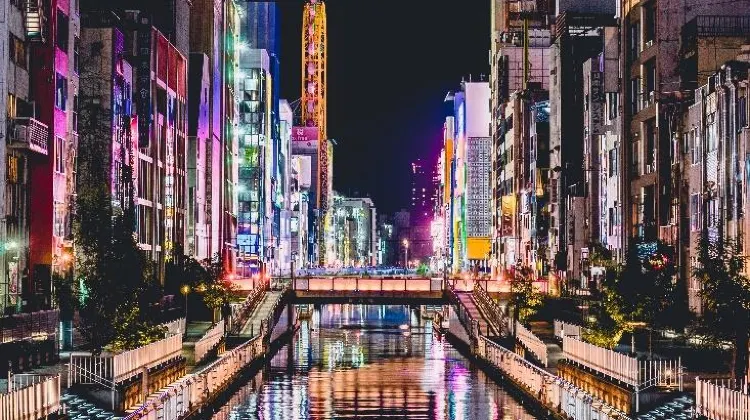
Source: Redd/ unsplash
Be wowed by the sheer liveliness of Dotonbori!
6. Fushimi Inari, Kyoto
Fushimi Inari is one of Japan’s most famous Shinto shrines, and it’s known for its iconic torii gates. The shrine is dedicated to Inari, the Shinto god of rice, and foxes are known to be its messengers. Hence, you can find beautiful stone sculptures of foxes throughout the religious site. If you wish to explore the place with a lesser crowd, it’s advisable to be there early. The closest international airport to Kyoto is the Kansai International Airport, which is located 98 km away. Visitors can take the Haruka Limited Express train from the airport and reach Kyoto in approximately 1 hr 20 minutes.
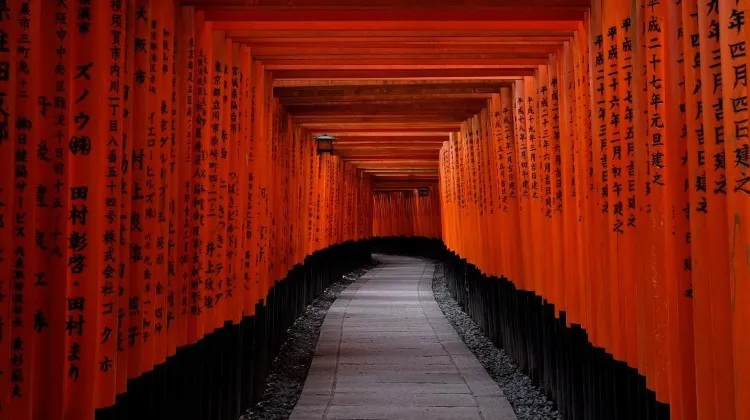
Source: Junsheng Chen/ unsplash
Fushimi Inari is known for its iconic torii gates.
7. Arashiyama, Kyoto
Arashiyama is another famous tourist attraction in Kyoto that has attracted visitors from all over the world with its tranquil bamboo grove. From spring to autumn, visitors can also board the Sagona Romantic Train to enjoy scenic views of the mountain. If you’re a fan of monkeys, don’t miss out on a chance to spot them at Kameyama-koen Park!
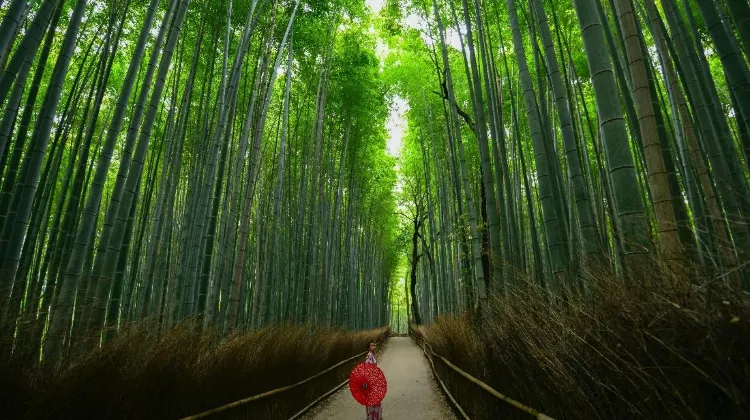
Source: Walter Mario Stein/ unsplash
The tranquil Arashiyama Bamboo Grove is a sight that cannot be missed.
8. Kiyomizu-dera, Kyoto
Kiyomizu-dera's name means the “Pure Water Temple”, and its origin can be traced all the way back to A.D. 780. This renowned temple in Kyoto was designated a UNESCO World Heritage site in 1994. In the temple, you can find a wooden stage built without nails. The temple is also famous for the Otowa Waterfall where you can drink the water for good luck. Kiyomizu-dera is open from 06:00 to 18:00 daily.

Source: Ritz/ unsplash
Kiyomizu-dera was designated a UNESCO World Heritage Site in 1994.
9. Himeji Castle, Himeji
Himeji Castle is Japan’s best preserved feudal castle, and it’s known for its iconic white and elegant appearance. The castle exhibits early 17th-century Japanese castle architecture. It was never destroyed by natural or manmade disasters, and its original structures still stand today. It’s no wonder why it was designated as a UNESCO world heritage in 1993. The opening hours for Himeji Castle are from 09:00 to 16:00 daily. The closest major international airport to Himeji is the Kansai International Airport, which is 130 km away. The distance will take 2 hr via train and bus.

Source: Vladimir Haltakov/ unsplash
Himeji Castle is a rare Japanese castle that has been preserved through the centuries.
10. Ginzan Onsen, Yamagata
If you love soaking in hot baths, be sure to give Ginzan Onsen a visit! Onsen refers to Japanese hot springs, and Ginzan Onsen is one of the most popular (and prettiest) onsen places in Japan. Here, you can find traditional Japanese ryokans (inns) lining the streets, offering visitors a place to relax and enjoy the mountain views around them. The closest airport to Ginzan Onsen is the Yamagata Airport, which is 42 km away. From the airport, there is a direct bus to Ginzan Onsen departing three times a day. The ride takes about 1 hr and 15 minutes.

Ginzan Onsen is a pretty hot spring town situated in the mountains.
11. Mount Fuji, Shizuoka/Yamanashi
Mount Fuji is Japan’s highest mountain, and it sits on the border between Yamanashi and Shizuoka prefectures. Mount Fuji is Japan’s most iconic mountain, and there are countless Japanese products named after it. To admire the majestic sights of Mount Fuji, visitors can head to Lake Kawaguchi located in southern Yamanashi Prefecture.
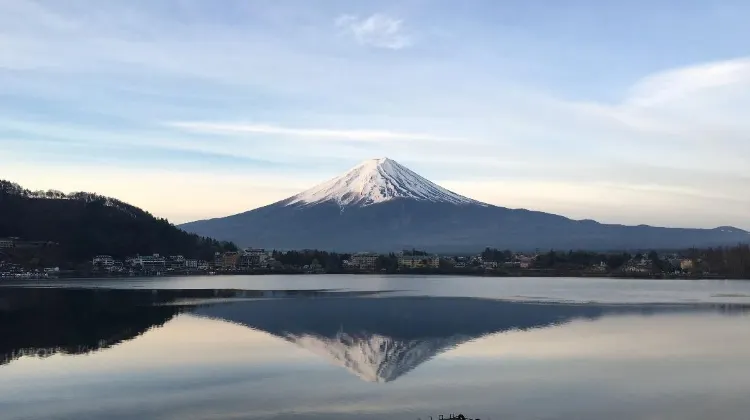
Source: Tommy Silver/ unsplash
The view of Mount Fuji at sunrise at Lake Kawaguchi
12. Nara Park, Nara
Nara Park is located in central Nara, and this is where you can find the famous Todaiji Temple which was constructed in A.D. 752. Nara Park is also known as a deer park, and you can find deer roaming freely here! If you wish to interact with the deer, simply purchase some deer crackers! The closest international airport to Nara is the Kansai International Airport, which is 78 km away. The distance will take 1 hr 30 minutes by train.
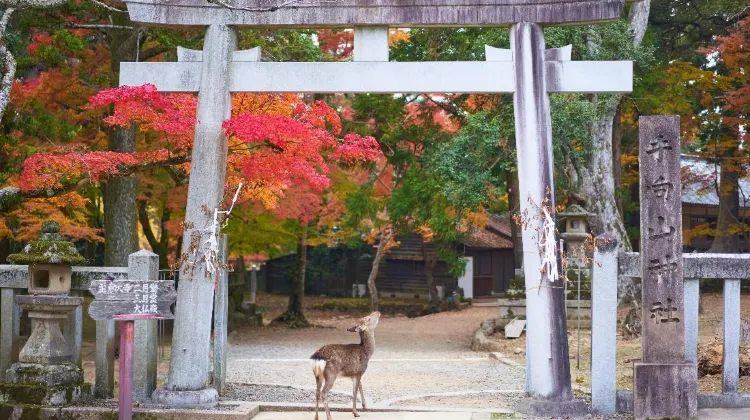
Source: Timo Volz/ unsplash
At Nara Park, you can feed deer with deer crackers!
FAQ about Visit Japan Web & Travel to Travel
-
Is Japan open for tourism?
Yes, Japan has reopened its borders since October 11, 2022. Vaccinated visitors won't be required to take pre-departure tests and on-arrival tests for entry.
-
What is Fast Track?
Visitors to Japan are required to submit relevant vaccination certificates, personal information and other details for entry. Fast Track is a way for visitors to complete most of the immigration paperwork before their arrival.
-
What is Visit Japan Web?
Visit Japan Web is the Fast Track Registration portal. This registration process includes Quarantine (Fast-Track), Immigration and Customs. The completion of each section will give you a QR code.
-
Why should I register for Fast Track on Visit Japan Web?
Visitors who have completed their registration before their arrival will be given access to a special lane at the airport, allowing you to expedite your immigration process.
-
What is the difference between MySOS and Visit Japan Web?
Fast Track applications in October 2022 are submitted via MySOS. However, MySOS will be replaced by Visit Japan Web from November 01, 2022 onwards.
